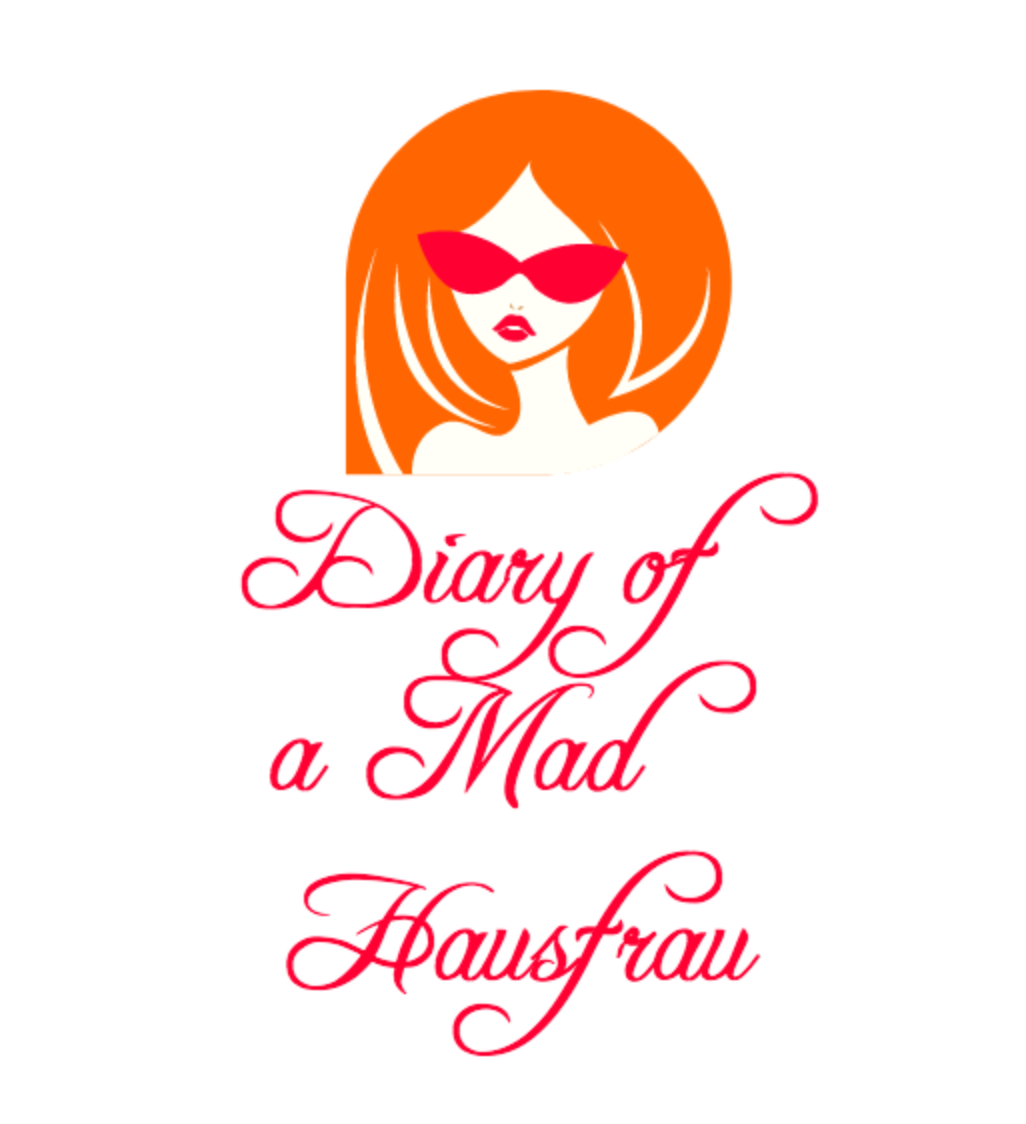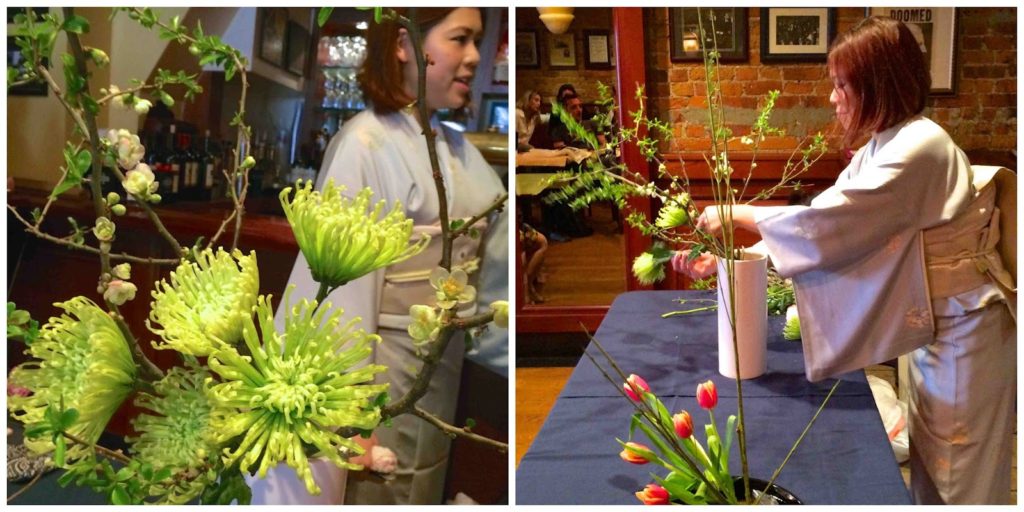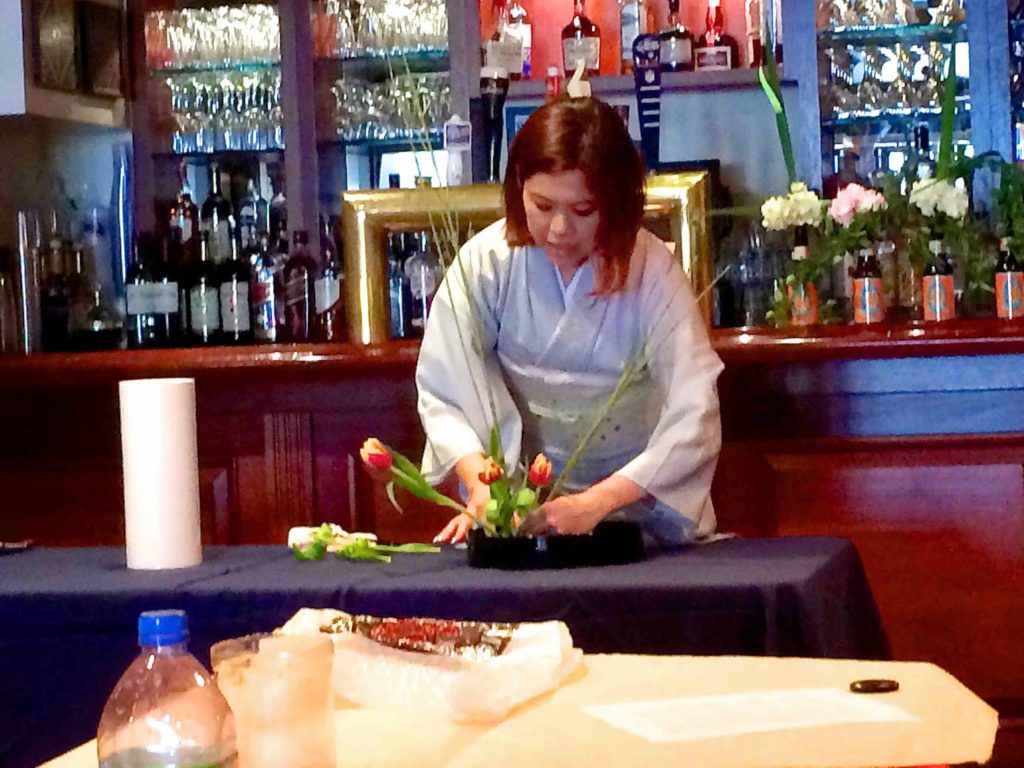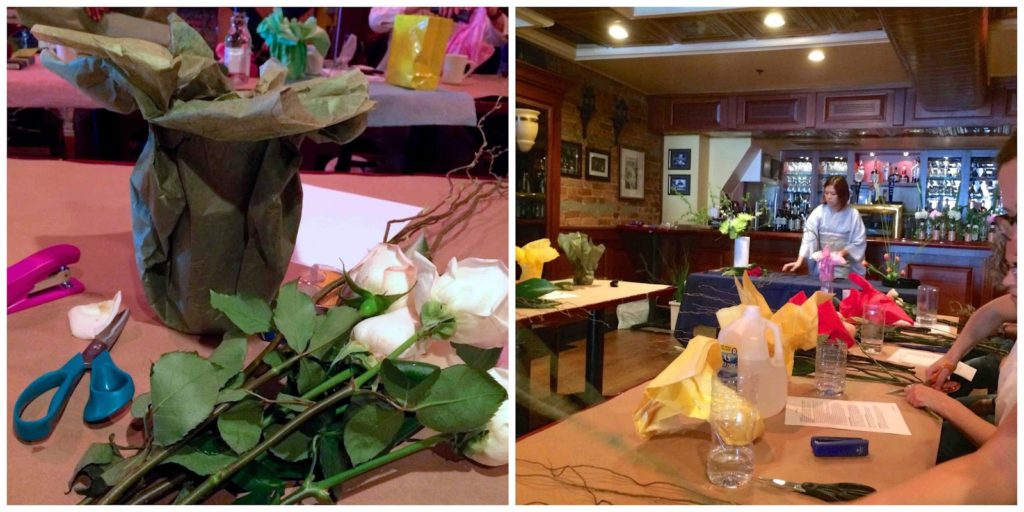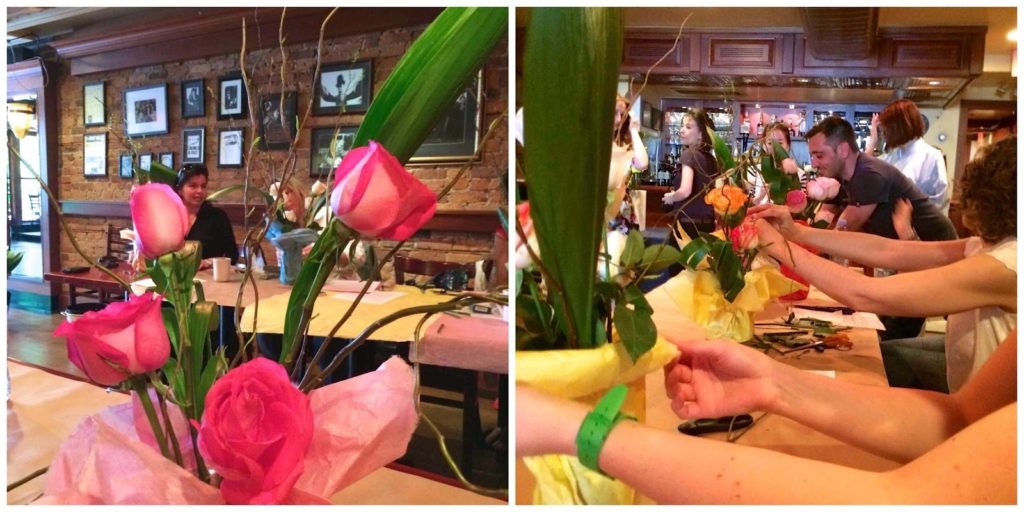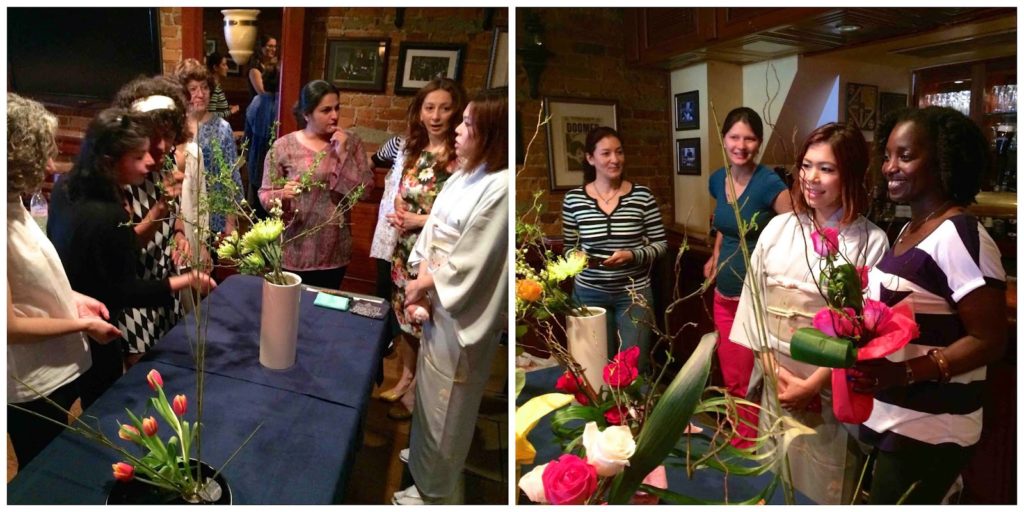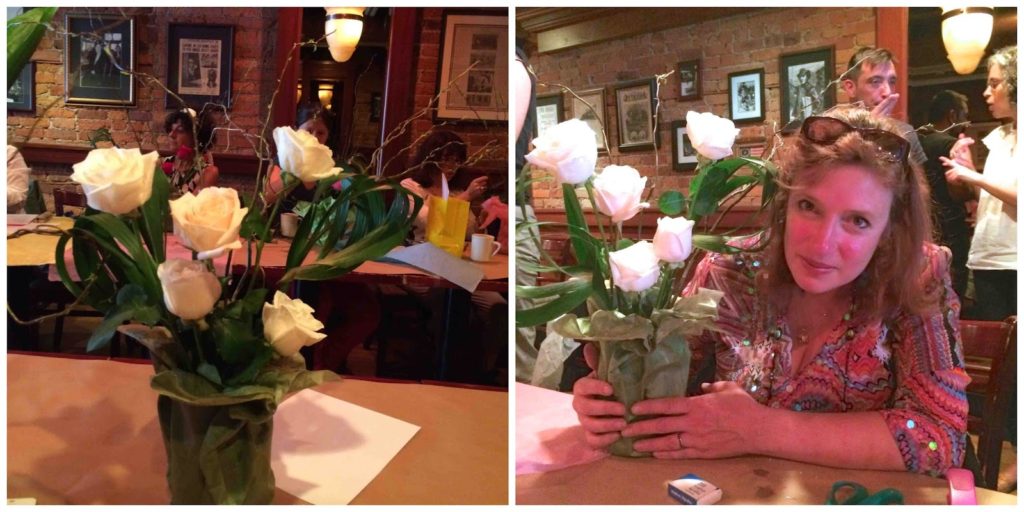1.5K
Ikebana is a centuries old Japanese style of flower arranging, a marriage of spirituality, humanity and nature. A few weeks ago one of our Japanese UN spouse members coordinated a session with Aiko Nobe, a master instructor of Ikebana at Sogetsu School to introduce us all to the gorgeous art of Ikebana.
The first part of the activity started with Aiko demonstrating two types of Ikebana. The first, a low level arrangement with Tulips and straight weedy branches. The second was a much taller, more dramatic version using entirely different materials.
According to Aiko, one of the biggest differences between Ikebana and flower arranging is, in Western culture, much more is added to the bouquet. Ikebana is about less. The beauty of the arrangements lie in their simplicity. One appreciates less more.
After the demonstration and short verbal introduction about history and style, it was time for all of us to try our hand at the art of Ikebana. We were previously instructed to bring a plastic water bottle we cut into vases. Using the sheets of the fine but sturdy Japanese paper covering the tables, we each selected a color and wrapped it around our bottles. Everyone chose a bundle of their favorite color roses, two large green leaves and a parcel of willow branches. Then the fun really started as everyone went to work on their very own Ikebana arrangements.
Going against my usual instinct to reach for the most colorful item in any room, I tried to apply the some less is more philosophy to my intended creation and opted for white roses and green paper to decorate my vase.
Aiko demonstrated how to bend and shape the willow branches. That they were so flexible was a pleasant surprise. I kept thinking they would split as I bent and shaped them. She showed us several ways to style the leaves using just a few staples, We could curl, wrap, bend, loop or tear them, each making a beautiful statement.
The roses were added last to finish off the arrangement Some participants cut their roses down into varying lengths, others used only one or two of the roses. Then, like magic, the energy of room was transformed with rainbow rows of colored vases containing beautiful, winding, lush arrangements.
All class members left holding their lovely creations, smiling a great deal more than when they came in. Everyone also carried out newfound knowledge of the gorgeous art of Ikebana. So much packed into just three hours. Indeed, Less is more.
